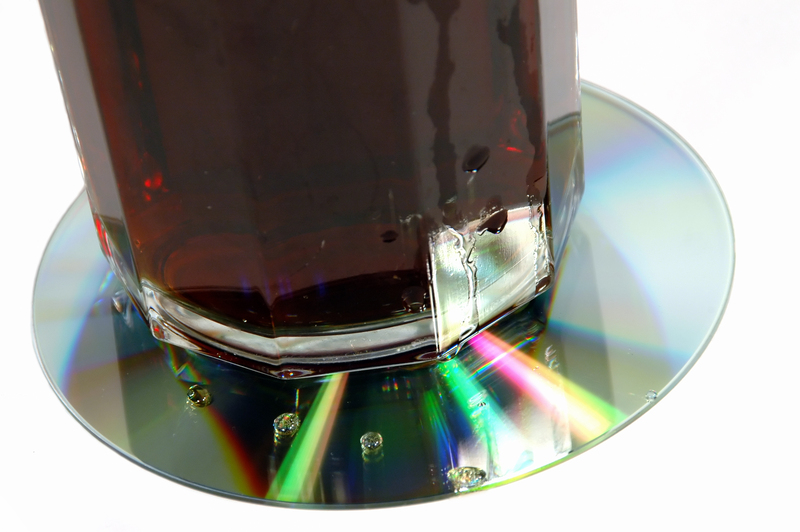The Plastics You Really Should Not Ingest
Plastics have revolutionized the modern world with their versatility, durability, and convenience. However, growing research reveals that these same qualities contribute to major health hazards when plastics inadvertently enter the human body. This comprehensive guide will explain which plastics you must avoid ingesting, why they're dangerous, how exposure occurs, and what you can do to minimize your risk.
Why Worry About Consuming Plastics?
Over the past decades, studies have increasingly linked microplastics and certain harmful plastic compounds to a range of health issues. Consuming plastics, even in microscopic amounts, can compromise bodily functions, disrupt hormones, and increase your risk of disease. Understanding what's truly dangerous--and why--is crucial for making informed choices about the plastics in your life.
What Happens When You Ingest Plastics?
When plastic particles enter the digestive system, they can cause:
- Chemical toxicity: Many plastics leach toxic substances such as bisphenol A (BPA), phthalates, or styrene, which can be absorbed by intestinal tissue.
- Endocrine disruption: Several plastic additives are known to mimic or block hormones, affecting critical bodily systems.
- Physical irritation: Microplastics may irritate the gut lining, potentially triggering immune responses or inflammation.
- Long-term accumulation: Certain plastic components may build up in organs, causing chronic health concerns over time.

The Most Dangerous Plastics to Avoid Ingesting
Not all plastics are created equal. Here are the types of plastics you should strictly avoid ingesting--intentionally or accidentally:
1. Polyvinyl Chloride (PVC) - Recycling Code #3
What is it? PVC is commonly found in food wraps, piping, and some bottles. It's flexible and inexpensive.
Why is it risky? PVC plastics often contain phthalates--chemicals added for flexibility--which can leach into food and beverages. These chemicals:
- Disrupt the endocrine system
- Are linked to reproductive and developmental issues
- May increase cancer risk with long-term exposure
2. Polystyrene (PS) - Recycling Code #6
What is it? Polystyrene is used to make foam cups, takeout containers, and egg cartons.
Why is it risky? Polystyrene can leach styrene, especially when heated. Styrene is a suspected carcinogen and neurotoxin. Ingesting food or drink that's been in contact with polystyrene--especially when microwaved--can expose you dangerously to this compound.
3. Polycarbonate (PC) and Plastics Containing Bisphenol A (BPA)
Where is it found? Polycarbonate plastics, often marked with recycling code #7, are present in water bottles, food storage containers, and baby bottles (though many countries now ban BPA in children's items).
Why is it risky? BPA can leach from these plastics, particularly under heat or wear. BPA is a notorious endocrine disruptor, with links to:
- Breast and prostate cancer
- Reproductive system harm
- Weakened immune function
- Neurological effects
4. Plasticizers and Additives in Other Plastics
Even some plastics considered "safer" can contain harmful additives like flame retardants, colorants, or stabilizers. These may migrate into food or drink, especially when containers are heated, scratched, or degraded.
How Do Harmful Plastics Enter Your Body?
Awareness is key, because it's not always obvious when you're exposed to unwanted plastics. Here are the primary ways plastics you should not ingest find their way to your plate--or directly inside your body:
Contaminated Food and Water
Microplastics have entered the entire global food chain. They appear in:
- Seafood (especially shellfish and small fish, which are consumed whole)
- Tap water and bottled drinks
- Salt, honey, and even some fruits and vegetables
Plastics and their chemicals can leach from packaging or cookware directly into food, particularly when exposed to:
- Heat (microwave, dishwasher, or sunlight)
- Acidic or oily foods
- Physical degradation (scratches, cracks)
Personal Care and Household Products
Some cosmetic exfoliants, toothpastes, and cleaning products contain microbeads--tiny plastic particles that can be inadvertently ingested.
Environmental Exposure
Plastic dust is now present in air, soil, and water. While most environmental exposure is unintentional, reducing it at the source helps limit how much finds its way into your food and drink.
Who is Most Vulnerable to Plastic Ingestion?
Anyone can be affected by hazardous plastics, but certain groups are especially at risk:
- Infants and children--due to developing bodies and higher exposure per unit of body weight
- Pregnant women--some plastic chemicals cross the placental barrier, affecting fetal development
- People with chronic illnesses--compromised systems may be less able to eliminate toxins
- Fishermen and seafood lovers--at greater risk from accumulated microplastics in marine foods
Recognizing Plastics in Everyday Products
To help you recognize plastics you really should not ingest, always check the recycling symbol on plastic products. Here's a quick reference:
- Code #3 (PVC): Wraps, some bottles, plumbing
- Code #6 (PS): Disposable cups, foam containers, egg cartons
- Code #7 (Other, often PC): Sports bottles, baby bottles, food storage with BPA
The Health Impacts: What the Science Tells Us
Short-Term Effects of Plastic Ingestion
The effects depend on amount and type, but potential short-term health issues include:
- Gastrointestinal discomfort
- Hormonal disturbances
- Headache and fatigue (from exposure to certain additives)
- Allergic reactions
Long-Term Consequences of Eating Plastics
Many plastic-related chemicals accumulate over time. Possible long-term effects include:
- Increased cancer risk
- Infertility and reproductive health problems
- Impaired child development
- Obesity and metabolic syndrome
- Immune disorders
How to Minimize Your Risk of Ingesting Dangerous Plastics
Protecting yourself and your family from ingesting plastics--especially the most dangerous types--requires a proactive approach:
1. Choose Safer Alternatives
- Opt for glass, stainless steel, or ceramic for food and drink storage
- Avoid heating any food in plastic containers--use microwave-safe glass instead
- Replace worn or scratched plastic items promptly
2. Avoid Single-Use and Foam Plastics
- Refuse polystyrene cups, plates, and take-out containers whenever possible
- Use reusable bags, bottles, and containers made from safer materials
3. Read Labels and Codes Carefully
- Look for "BPA-free" and "phthalate-free" labeling
- Check the recycling code to avoid #3, #6, and #7 plastics for food and drink
4. Support and Advocate for Stronger Regulations
- Many countries are banning microbeads and certain additives--support these efforts with your purchasing choices
- Encourage food and beverage companies to use safer packaging materials
5. Reduce Your Overall Plastic Footprint
- Limit consumption of packaged, processed, or out-of-home foods
- Choose fresh or homemade whenever possible
- Properly recycle and dispose of plastics to prevent further contamination

Frequently Asked Questions About Plastics Ingestion
Can my body get rid of microplastics once ingested?
Some microplastics pass through the digestive tract and are excreted, but certain smaller particles and plastic-derived chemicals may be absorbed into tissues or organs. Long-term health impacts are still being studied.
Is all plastic packaging unsafe?
Not all plastics are equally dangerous, but plastics marked with codes #3, #6, and #7, or those without clear labeling, are best avoided for direct food contact, especially when heating.
Is bottled water safer than tap water?
Both bottled and tap water can contain microplastics. Choosing safe, reusable bottles and using home filtration systems can help reduce exposure.
What about "biodegradable" and "compostable" plastics?
These alternatives may reduce environmental waste but can still release chemicals or microplastics. Treat them with caution, especially for food or beverage use.
The Bottom Line: Plastics You Really Should Not Ingest
The plastics you should not ingest are far more common than most people realize, lurking in food packaging, containers, and even the products we use daily. The best way to protect your health is to reduce your overall plastic use, choose safer alternatives for eating and drinking, and stay informed about which plastics pose the greatest risk. As scientific understanding deepens and regulations evolve, you'll be equipped to make the healthiest choices for you and your loved ones.
Stay alert, read the labels, and advocate for a plastic-free future--your health depends on it.